Veterinary Disclaimer: This article is for informational purposes only and does not replace professional veterinary advice. Always consult your veterinarian before starting new exercise routines with your dog, especially if they have pre-existing health conditions.
If your dog’s eyes light up the moment you reach for the leash, you already know how much they love being outside. But those wagging tails aren’t just about fun – outdoor dog activities play a vital role in your pet’s health and happiness. From boosting mood to building muscle, getting outside is one of the easiest, most joyful ways to keep your dog thriving.
As a veterinarian in general practice, I’ve seen firsthand how outdoor dog activities can transform a pet’s life – easing anxiety, shedding extra weight, and even improving joint health. Whether you’re hiking forest trails, tossing a ball at the park, or just strolling through your neighborhood, these moments offer more than movement – they build trust, confidence, and a lifelong bond.
Table of Contents
🐾 Key Takeaways: Outdoor Dog Activities
- Outdoor dog activities improve physical health, mental stimulation, and emotional well-being.
- Daily walks, hikes, fetch, swimming, and agility all help prevent obesity, anxiety, and boredom.
- Activities should match your dog’s age, breed, and health needs—seniors and flat-faced breeds may need modified routines.
- Safety is key: check the weather, use proper gear, and consult your vet before starting intense activities.
- Even 15–30 minutes of outdoor time daily can make a big difference in your dog’s behavior and happiness.
Why Outdoor Time Matters for Dogs
Physical and Mental Health Benefits
Dogs are natural explorers, and their bodies and brains thrive on fresh air and movement. Regular outdoor dog activities help maintain a healthy weight, build muscle tone, and support cardiovascular health. But just as crucial is the mental stimulation: sniffing, problem-solving, and encountering new environments keep your dog’s mind sharp and stress levels low.
Physical benefits include:
- Stronger joints and better mobility
- Improved heart and lung function
- Reduced risk of obesity and related diseases (like diabetes and arthritis)
Mental and emotional perks include:
- Lower anxiety levels
- Reduced destructive behaviors at home
- Better sleep and overall contentment
Letting your dog use their nose, navigate new paths, or interact with different textures and terrains all engage their brain’s “seeking system”—a natural mood-booster. Many dogs return home from outdoor dog activities more relaxed, well-behaved, and eager for their next outing.
https://vcahospitals.com/know-your-pet/the-benefits-of-walking-your-dog
Vet Perspective: What I See in Practice
In my Ottawa clinic, I often meet anxious or overweight dogs whose families are surprised how much better they do with just a few more minutes outside each day. A retriever I treated last year went from chewing furniture to calmly napping after his owners started a daily “sniff walk” routine. Whether it’s a Labrador needing more fetch or a senior needing gentle trail time, I’ve seen how customized outdoor dog activities can truly improve quality of life.
The 9 Best Outdoor Activities for Dog Wellness
1. Daily Walks & Nature Hikes
The simplest and most essential of all outdoor dog activities, daily walks provide steady exercise, mental enrichment, and a chance to strengthen your bond. Walks allow dogs to burn calories, stretch their legs, and sniff their way to a calmer mindset.
Benefits:
- Promotes healthy weight and mobility
- Reduces stress and curbs boredom-related behaviors
- Builds trust and routine through shared experiences
Tips:
- Tailor pace and distance to your dog’s age and breed
- Let your dog sniff – this mental workout is just as important as the physical
- Avoid extreme heat or icy walks; early morning or dusk is best
- Vary your routes to keep walks engaging
- Use reflective gear, poop bags, and a collapsible water bowl
Whether it’s a quick walk around the block or a weekend hike in the Gatineau Hills, this staple of outdoor dog activities benefits every pup.
2. Fetch & Frisbee (High-Energy Chase Games)
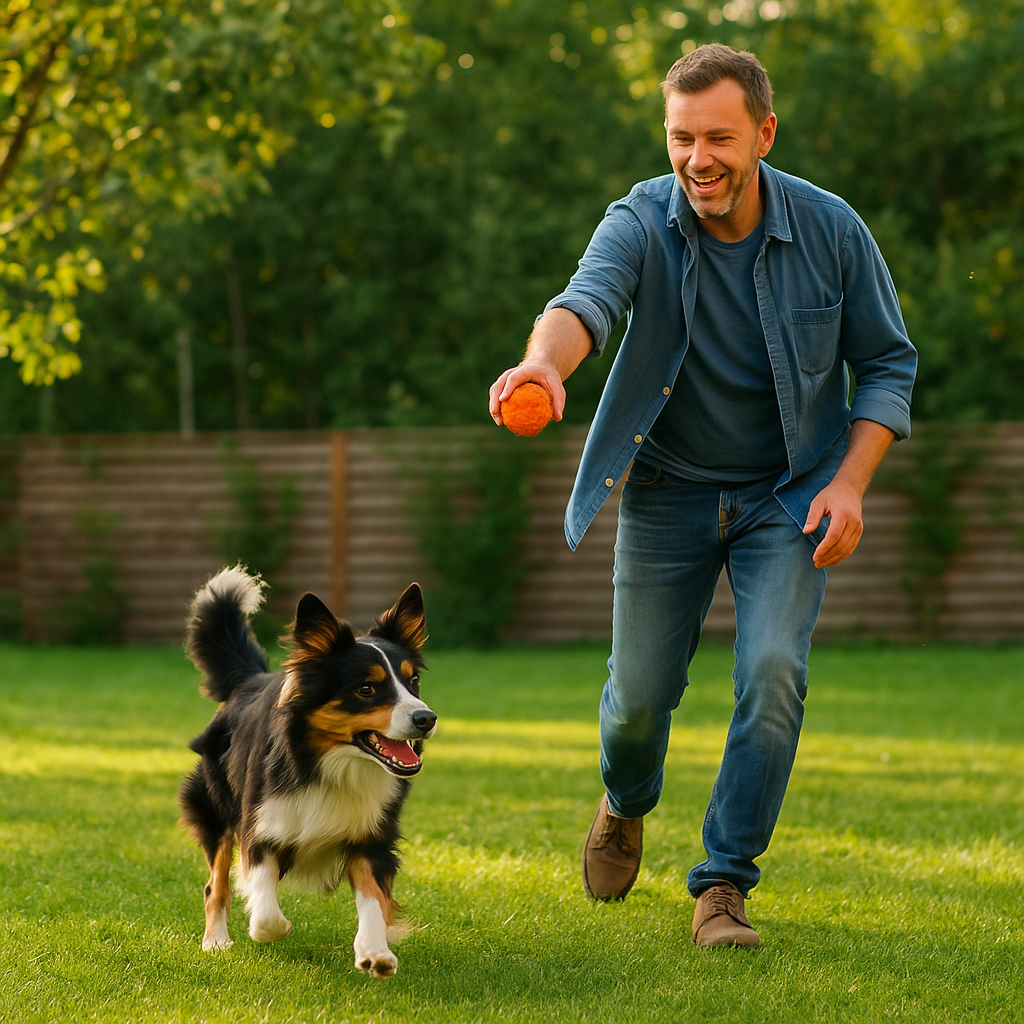
https://doglifeexpert.com/the-5-best-overweight-dog-exercises/
For dogs with endless energy, fetch is one of the most rewarding outdoor dog activities. This classic chase game taps into your dog’s natural instincts to run, retrieve, and return—while also providing intense physical and mental stimulation.
Benefits:
- Burns energy quickly and improves cardio health
- Builds focus, discipline, and recall skills
- Strengthens your bond through shared fun
Tips:
- Choose a safe, fenced area with soft ground (grass is ideal)
- Use dog-safe toys that are easy to carry but too big to swallow
- Always warm up with a walk and offer water breaks
- Avoid hard or hot surfaces to protect paw pads
- Tailor intensity for age and breed—brachycephalic and senior dogs need gentler sessions
As a vet, I recommend fetch as one of the best outdoor dog activities for healthy, high-drive breeds like Border Collies and Labs. It channels energy into structured play and often results in a happier, calmer dog at home.
3. Jogging & Canicross (Running Together)
If you’re an active runner, bringing your dog along for a jog—or even training in canicross—can be a powerful way to bond and stay fit together. These more intense outdoor dog activities help athletic breeds burn serious energy and improve overall endurance.
Benefits:
- Builds cardiovascular strength and muscle tone
- Offers structured mental engagement (staying beside you, following pace)
- Helps reduce anxiety and hyperactivity in high-energy dogs
Tips:
- Wait until your dog is at least 12–18 months old to protect growing joints
- Start slowly and build distance over time
- Run on dirt trails or grass to cushion joints
- Avoid hot pavement and midday sun
- Use a no-pull harness and consider a hands-free leash for comfort
Some breeds (like Huskies or Vizslas) thrive on running, while flat-faced or heavy dogs may struggle. Ask your vet if your dog is a good candidate for these higher-intensity outdoor dog activities.
4. Swimming & Water Play
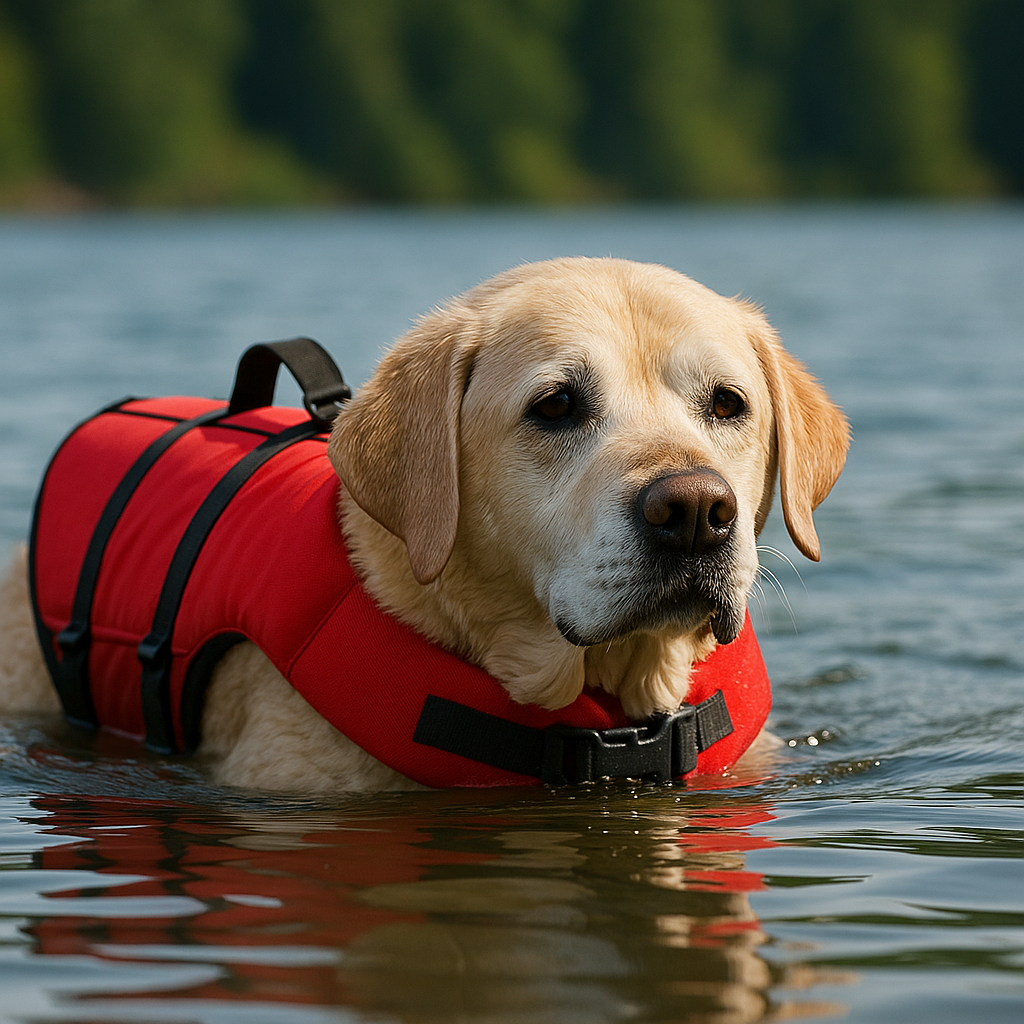
One of the best low-impact outdoor dog activities, swimming offers full-body exercise with minimal strain on joints. It’s ideal for dogs with arthritis, obesity, or recovering from injury, and it doubles as a cool-down activity on hot days.
Benefits:
- Strengthens heart, lungs, and major muscle groups
- Improves joint mobility without pounding impact
- Mentally engaging and cooling during warm weather
Tips:
- Start in shallow water and let your dog ease in gradually
- Use a well-fitted canine life jacket for safety
- Supervise at all times—even confident swimmers can tire quickly
- Rinse your dog after swimming in chlorinated or salty water
- Avoid stagnant water with algae or strong currents
Whether it’s paddling in a backyard pool, a calm lake, or a designated dog beach, swimming is one of the most versatile outdoor dog activities for dogs of all sizes and life stages.
5. Backyard Agility & Obstacle Courses
Agility isn’t just for competitions. Setting up a simple obstacle course in your yard can turn everyday play into a dynamic session of outdoor dog activities that challenge both body and mind.
Benefits:
- Improves coordination, balance, and body awareness
- Builds confidence and strengthens your communication
- Mental stimulation reduces boredom and behavioral issues
Tips:
- Use low, safe DIY props: broom handles, cardboard tunnels, or cones
- Start slowly with one obstacle and build up to more
- Keep sessions short and positive—reward often
- Always use grass or soft ground to protect joints
- Avoid jumping for puppies or senior dogs; focus on weaving or tunnels
Agility is especially effective for smart, energetic breeds like Australian Shepherds or Poodles. But with the right adjustments, all dogs can enjoy these enriching outdoor dog activities in your own backyard.
6. Sniffing Walks & Scent Games
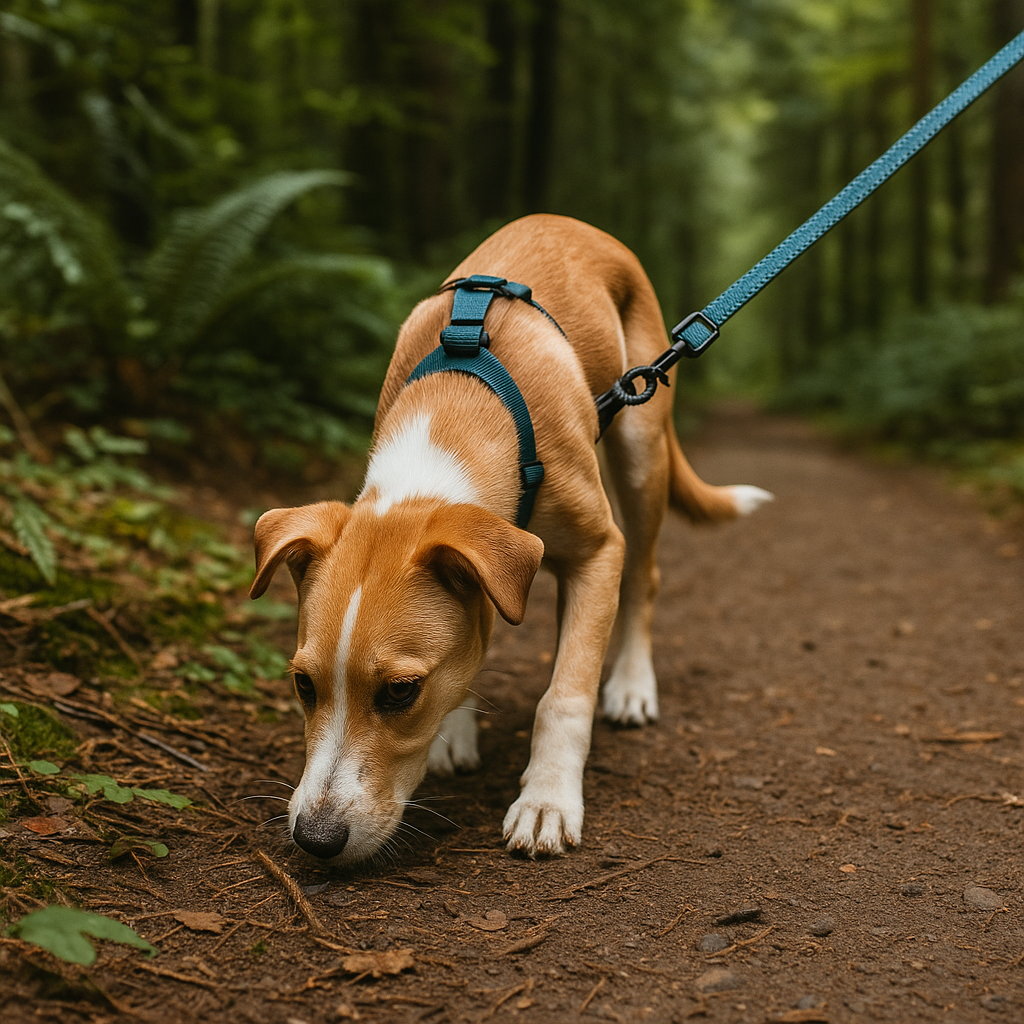
Not all outdoor dog activities need to be physically intense. Letting your dog lead with their nose on a “sniffari” walk or playing scent-based games taps into their natural instincts and offers deep mental enrichment.
Benefits:
- Activates the brain’s reward and seeking system
- Reduces anxiety and helps calm reactive dogs
- Accessible for all ages, including seniors and dogs with mobility issues
Tips:
- Loosen the leash and let your dog set the pace
- Choose quiet areas with grass, trees, or trails full of natural smells
- Play “find it” games in the yard by hiding treats or toys
- Avoid areas with harmful plants or debris
- Use scent-based puzzle toys outdoors on rainy days as an alternative
VCA Animal Hospitals note that sniffing can lower heart rate and release dopamine in dogs—proof that these low-key outdoor dog activities provide a calming “workout” for the brain.
7. Dog Parks & Playdates (Social Off-Leash Play)
Social dogs often thrive with free play. Dog parks and backyard playdates offer spontaneous, enriching outdoor dog activities that build social skills and burn energy.
Benefits:
- Teaches proper dog-to-dog communication
- Relieves boredom and reduces destructive behaviors
- Great for confident, well-socialized dogs who love to run
Tips:
- Start with small, controlled introductions before large parks
- Watch for healthy play signs: play bows, relaxed tails, gentle chasing
- Separate dogs by size when possible
- Avoid peak heat and always bring water
- Supervise interactions and leave if play becomes too rough
While not every dog enjoys dog parks, for the social butterflies, these unstructured outdoor dog activities can provide unmatched mental and physical enrichment.
8. Camping & Long Hikes (Outdoor Adventures)
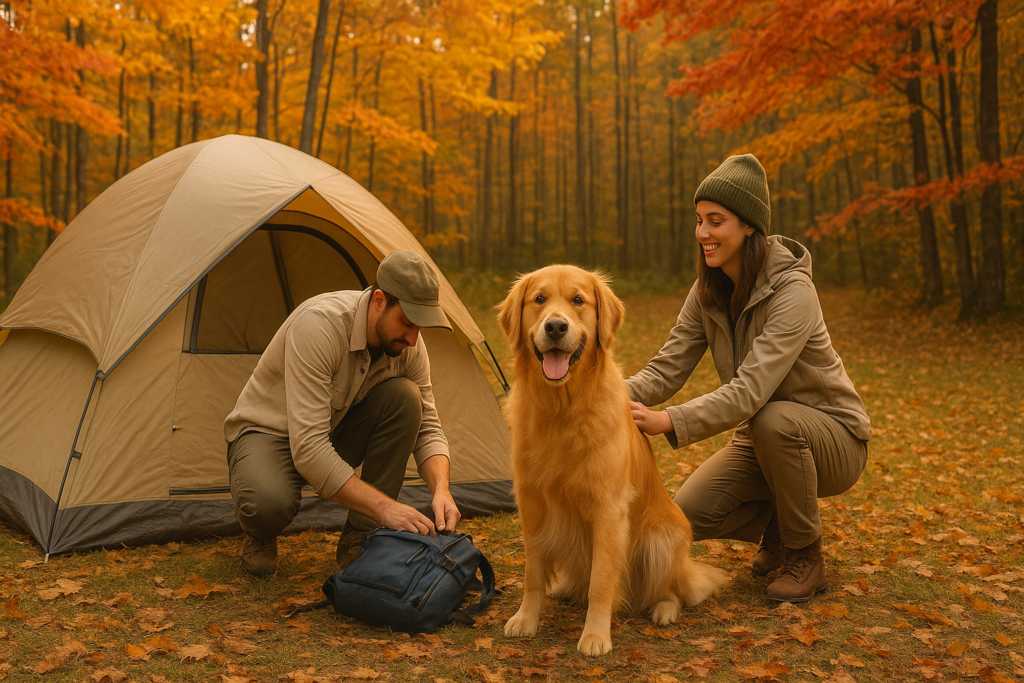
Want to deepen your bond while boosting your dog’s health? Try camping or embarking on longer hikes. These immersive outdoor dog activities offer continuous movement and mental stimulation in ever-changing environments.
Benefits:
- Builds endurance and muscle strength, especially with elevation
- Sharpens problem-solving through new terrain and natural obstacles
- Strengthens trust and connection through shared adventure
Tips:
- Bring extra water, food, leash, ID tag, and a canine first-aid kit
- Keep dogs leashed on trails to avoid wildlife or accidents
- Use tick/flea prevention and check their coat regularly
- Take frequent breaks in the shade and monitor for fatigue
- Camp with a sleeping pad and keep your dog tethered at night
Many dogs, especially those used to active lifestyles, thrive during these longer outdoor dog activities. Just remember to pace your trip to your dog’s stamina and prep well in advance.
9. Outdoor Hide-and-Seek & Puzzle Games

For brainy dogs, hide-and-seek and scavenger hunts are mentally enriching outdoor dog activities that don’t require running miles. These games are especially great for rainy days, small yards, or when your dog needs more thinking than sprinting.
Benefits:
- Builds confidence and critical thinking
- Taps into natural hunting instincts
- Can be modified for any age, breed, or mobility level
Tips:
- Start by hiding in easy spots or using smelly treats
- Use a consistent cue like “find it!” to start the game
- Always play in a secure area free of hazards
- Gradually increase difficulty as your dog improves
- Rotate between puzzles, hide-and-seek, and scavenger trails
Even five minutes of mental exercise with these outdoor dog activities can leave your pup satisfied and ready to relax. They’re perfect for adding variety to your routine without needing a park or field.
Matching Activities to Your Dog’s Needs
Not all outdoor dog activities are ideal for every pup. Tailoring your dog’s routine based on their age, breed, and health is the key to keeping them safe and happy.
Age & Breed Considerations
- Puppies (under 12 months): Avoid long runs or jumping. Stick to gentle walks, social playdates, and supervised scent games.
- Adult dogs (1–7 years): Can typically enjoy the full range of outdoor dog activities, from fetch to hikes, depending on breed and stamina.
- Senior dogs (7+ years): Focus on low-impact options like swimming, sniffing walks, and short agility sessions without jumps.
Breed-specific needs:
- High-energy breeds (e.g., Border Collies, Huskies): Thrive with fetch, running, and agility.
- Flat-faced breeds (e.g., Pugs, Bulldogs): Prefer cooler weather, shorter walks, and gentle water play.
- Small dogs (e.g., Chihuahuas): Enjoy scaled-down games and neighborhood walks but tire quickly on long hikes.
Special Cases
- Overweight dogs: Start with slow walks and swimming. Gradually build duration as fitness improves.
- Dogs with joint issues: Prioritize swimming, controlled scent walks, and avoid jumping or high-impact fetch.
- Reactive dogs: Use structured games like hide-and-seek or backyard agility instead of busy dog parks.
Knowing your dog’s limits ensures that outdoor dog activities stay safe, fun, and beneficial throughout their life.
5-Minute Outdoor Checklist for Canadian Dog Owners
Before heading out for your favorite outdoor dog activities, use this quick checklist to ensure your pup stays safe, comfortable, and happy:
✅ Leash and harness: Secure, well-fitted, and escape-proof
✅ ID tags & microchip: In case your dog gets lost on a trail or in a park
✅ Water & collapsible bowl: Especially crucial on warm or active days
✅ Poop bags: Keep parks and trails clean
✅ Weather check: Avoid hot pavement, icy conditions, or thunderstorms
✅ First-aid kit: Include tweezers, bandages, antiseptic, and any meds
✅ Paw protection: Use booties or balm in extreme cold or heat
✅ High-value treats or toys: Great for recall, praise, or game rewards
✅ Tick/flea prevention: Especially before hiking or camping
Preparedness helps make all outdoor dog activities smoother, safer, and more enjoyable for both you and your dog.
Typical Canadian Costs for Outdoor Dog Activities
Wondering how much these outdoor dog activities might cost? Here’s a quick guide based on typical Canadian pricing:
| Activity/Item | Estimated Cost (CAD) |
|---|---|
| Dog park membership (annual) | $40–$100 |
| Collapsible water bowl | $10–$20 |
| Canine life jacket | $40–$80 |
| Agility starter kit (basic) | $50–$150 |
| Hiking harness with handle | $35–$90 |
| Tick/flea prevention (monthly) | $15–$30 |
| Dog-friendly sunscreen | $10–$25 |
| Dog booties (set of 4) | $25–$60 |
| Pet-safe first aid kit | $30–$70 |
| Outdoor cooling mat or vest | $30–$90 |
Most outdoor dog activities require minimal investment beyond basic gear and preparation. With thoughtful planning, you can enrich your dog’s life without breaking the bank.
Preventing Outdoor Injuries & Health Risks
Even the best-planned outdoor dog activities come with risks. Here’s how to keep your pup safe:
Common Hazards
- Heatstroke: Dogs overheat fast. Watch for heavy panting, drooling, disorientation, or collapse. Always offer shade and water.
- Paw injuries: Hot pavement, icy sidewalks, and sharp rocks can cause burns or cuts. Check paws after every outing.
- Ticks and fleas: Use vet-recommended preventives, especially before hikes or camping. Check ears, belly, and between toes post-trip.
- Sprains or strains: Avoid intense running or jumping on hard surfaces. Warm up before and cool down after activity.
Safety Gear & First Aid
- Leash with reflective features for low-light conditions
- Cooling vest or mat during summer adventures
- Dog-safe insect repellent for backcountry camping
- Portable first-aid kit with saline, antiseptic, tweezers, and bandages
- Life jacket for swimming dogs, especially in lakes or rivers
Staying alert and prepared ensures that your outdoor dog activities stay fun—not frantic.
FAQs About Outdoor Dog Activities
What’s the safest outdoor activity for senior dogs?
Low-impact activities like sniffing walks or swimming are best for seniors. These outdoor dog activities support mobility and mental stimulation without straining joints.
Can all dogs learn to swim?
Most can, but not all are natural swimmers. Introduce water slowly and use a life jacket. Short-nosed or dense-bodied breeds may need more support.
How do I know if my dog is overheating?
Watch for rapid panting, drooling, dark gums, wobbling, or vomiting. Stop immediately, cool your dog gently, and call your vet if symptoms persist.
How much outdoor time does my dog really need?
Most dogs need at least 30–60 minutes of daily outdoor activity. High-energy breeds may need more, while seniors may prefer short, frequent sessions.
What are signs my dog is getting too little mental stimulation?
Restlessness, chewing, barking, or pacing indoors may signal boredom. Add sniffing walks, hide-and-seek, or puzzle-based outdoor dog activities to help.
Conclusion & Final Vet Tips
Adding variety to your outdoor dog activities isn’t just about having fun—it’s about nurturing a healthier, happier dog. Whether you’re playing scent games, running trails, or cooling off in a lake, these moments give your dog exercise, stimulation, and emotional connection.
As a veterinarian, I encourage clients to treat outdoor time like preventive medicine. Dogs that engage regularly in enriching, tailored activities tend to have:
- Fewer behavioral issues
- Stronger muscles and healthier joints
- Lower stress and anxiety levels
- Better weight management and cardiovascular health
The best part? These shared experiences deepen your bond. So grab the leash, pack some treats, and explore the world together. Your dog doesn’t care if it’s a short sniff-walk or an all-day hike—as long as it’s with you.

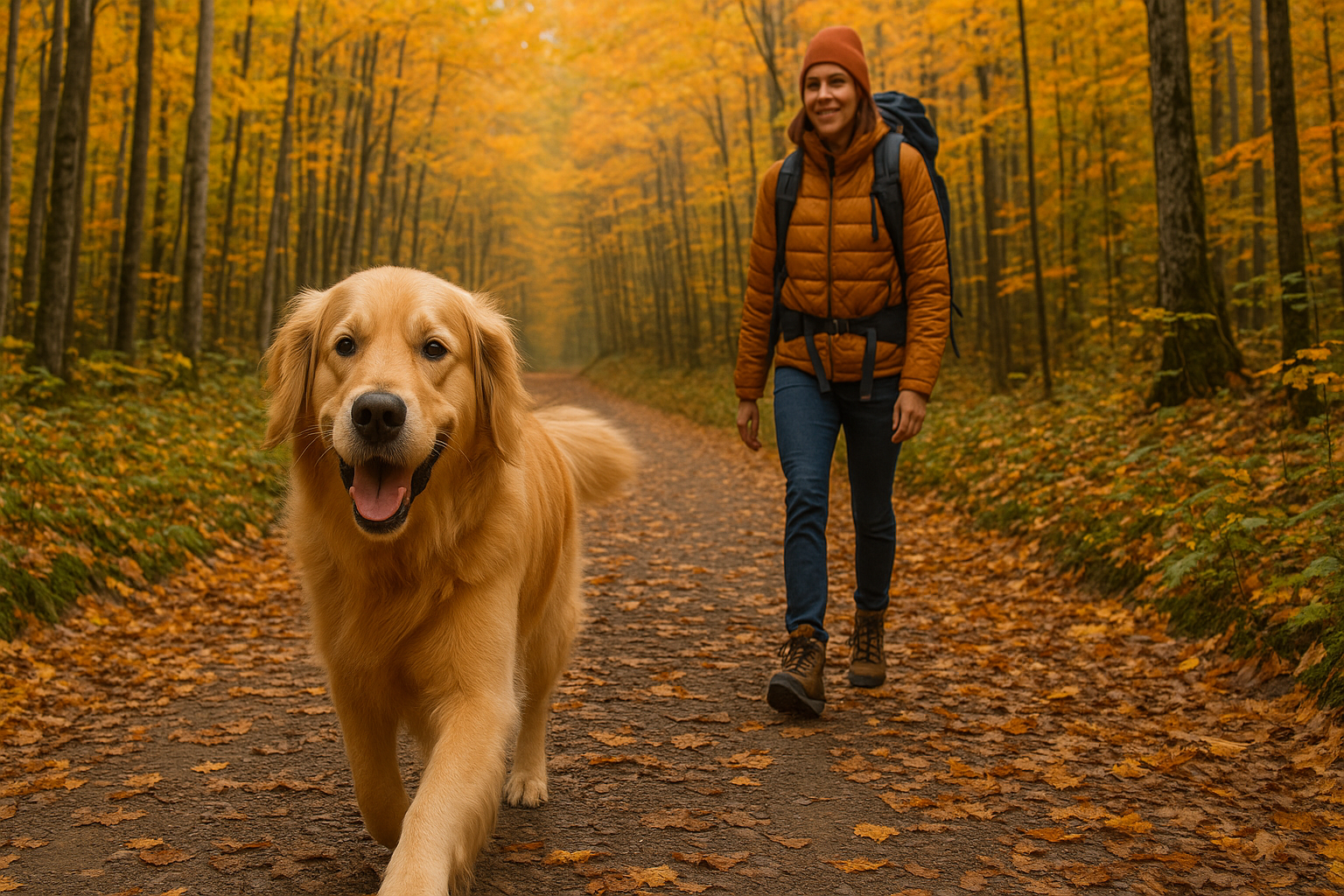
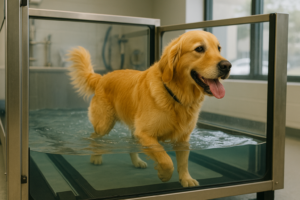

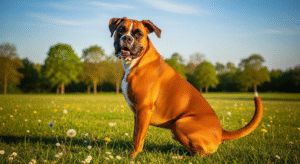
Pingback: 2025 Indoor Dog Exercise: Fun Ideas for Small Spaces